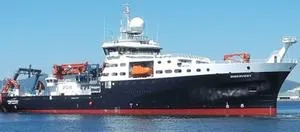
Details of a new atlas that maps surface ocean carbon dioxide levels across the Earth have been released by an international team of marine carbon researchers.
The most comprehensive dataset of its kind, the atlas allows an estimate of how much carbon dioxide (CO2) is being absorbed by the oceans globally and how this is affecting, and being affected by, climate change.
The Surface Ocean CO2 Atlas, SOCAT, was described recently in the journal Earth System Data Science, involving numerous research institutions including the National Oceanography Centre.
SOCAT provides a publicly available record of how marine surface CO2 has changed over time, in all areas of the ocean. The database pulls together 6.3 million measurements, collected by research vessels, commercial ships and moorings between 1968 and 2007. These data are publicly available online at www.socat.info.
The oceans act as a giant buffer for atmospheric CO2, absorbing the gas at the surface and drawing it down, locking it away in deeper waters. Surface ocean CO2 is therefore an important parameter for understanding how much carbon is being removed from the atmosphere. Scientists are trying to quantify this ‘carbon pump’ and predict how it will change as atmospheric CO2 levels rise – and whether it will continue to moderate climate change in the future.
Dr Richard Sanders, Head of the National Oceanography Centre’s Ocean Biogeochemistry & Ecosystems research group, said “SOCAT is an invaluable resource for those involved in studying ocean carbon fluxes. It reflects the efforts of multiple researchers from many different institutions worldwide including NOC. Our contribution was supported by NERC core funding which we have recently formalised into a National Capability CO2 project. Into the future we anticipate continuing this work over the entire Atlantic Ocean as part of the Ragnarocc project, a component of the NERC Greenhouse gases research programme.”
Initiated in 2007 at the Surface Ocean CO2 Variability and Vulnerability meeting, the first atlas became available in September 2011, led by the University of East Anglia. The dataset was assembled by a team of more than 100 scientific experts from around the world.
The second version of SOCAT is under review at earth system science data discussions since 4 June 2013 and contains over 10 million datapoints.